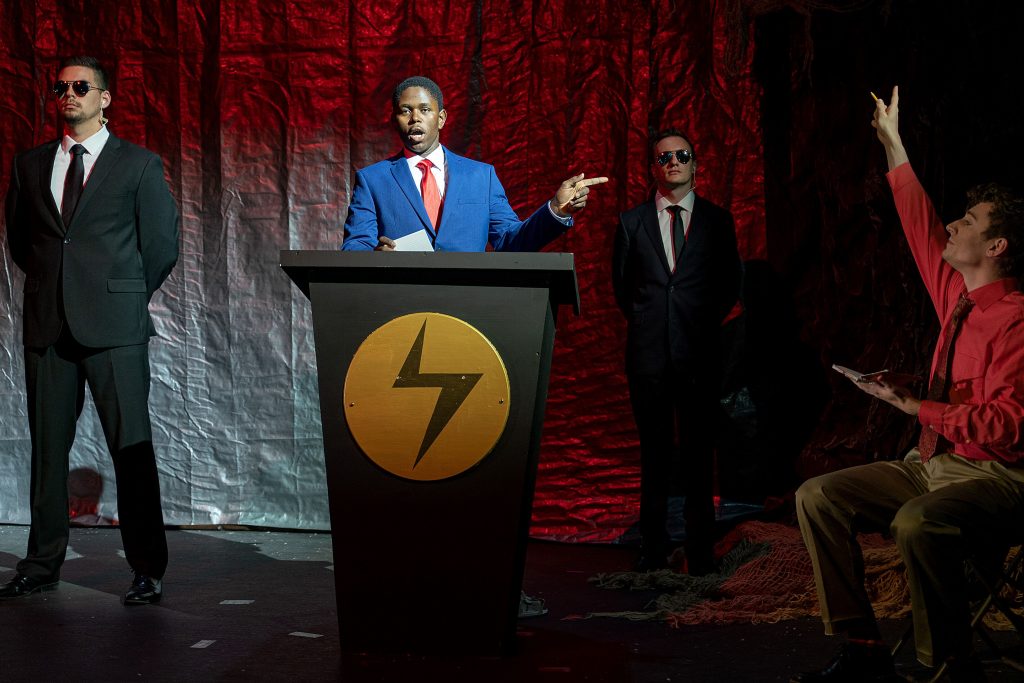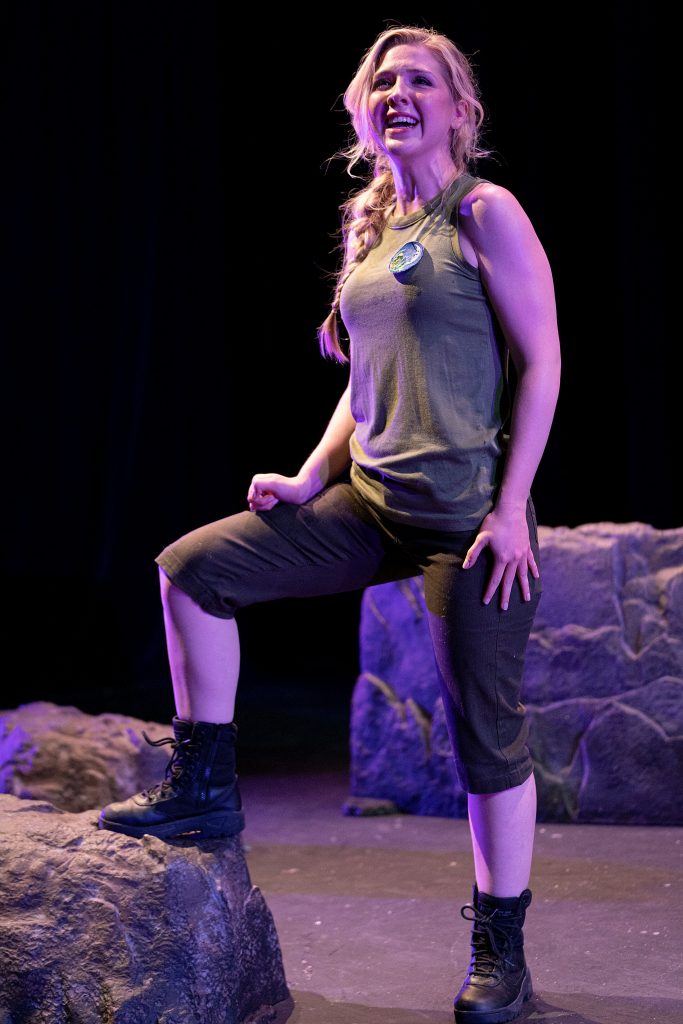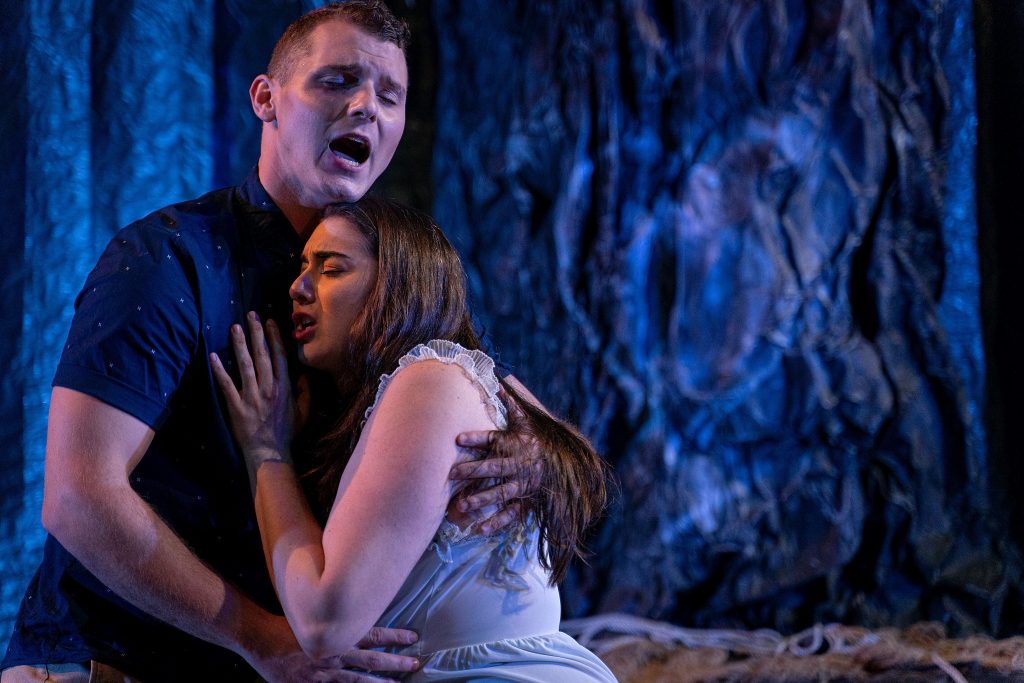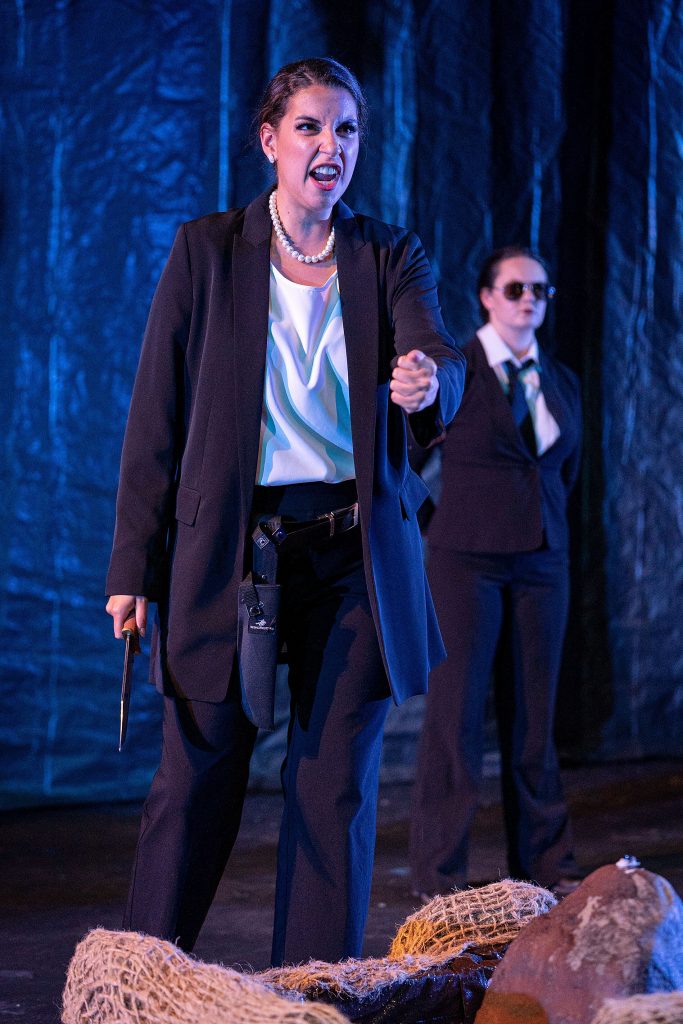Rare Francesco Cavalli Opera Sighted on Stage in the Golden Triangle
While watching Opera NEO’s opening night performance of Francesco Cavalli’s 1651 La Calisto, a familiar French adage kept coming to mind. “The more things change, the more they stay the same.”

Langelihle Mngxati (at podium) & Mason McDermaid [photo (c.) Gary Payne]

Amanda Austin [photo (c.) Gary Payne]
Unlike today’s society, such behavior in high places is not simply shrugged off. Pan, C.E.O. of All Forests, Ltd., who has lusted after Diana orders his cohorts capture and torture Endimione, while Juno turns Calista into a bear. (Note to a certain Melania—you might try this approach!) As Calisto grins and bears her fate, the remorseful Jove has her turned into a constellation, Ursa Minor. Diana manages to free Endimione from his tormentors and awards him a scholarship to study at the Sorbonne. OK, I made that last part up, but it is no more unlikely than anything else that happens in La Calisto.
While the singers of La Calisto brought a laudable level of vocal prowess to the opera, without a stellar band of period musicians, this production could not have made a serious case for reviving this 1651 score. Fortunately, Opera NEO Artistic Director Peter Kozma persuaded British conductor Benjamin Bayl to return to the festival to lead a polished 13-member period instrument ensemble. Bayl, who is Associate Conductor of Hanover Band and a sought-after conductor in Europe’s most prestigious opera houses, conducted the company’s highly successful production of Handel’s Partenope last season.
Conducting from the first harpsichord, Bayl counted on a robust continuo section that included cello, bass, and gamba (Joshua Keller), a second harpsichord (Michael Thomas Asmus) and two theorbos (Jason Yoshida and Alejandro Acosta), to give a deep, resonant purr that smartly undergirded the strings and Baroque recorders. Bayl adroitly maintained the pace and cadence of this 17th-century opera’s predictable text-heavy arioso style, which can all too easily drift into a sing-song monotony.
Amanda Austin’s bright, supple soprano proved ideal for the signature Calisto role, imbuing her character with a depth that made her presence always welcome on the stage. As Jove (or Giove in the score), South African bass-baritone Langelihle Mngxati exuded imperious authority, except when he was called on to show his randy movie mogul predatory intentions. Tenor Mason McDermaid appeared to be having way too much fun as the rascally sidekick Mercury (or Mercurio), showing off his silvery tenor with confident splash.

Michael Skarke & Kira Dills-DeSurra [photo (c.) Gary Payne]
Countertenor Michael Skarke offered gleaming cantabile lines appropriate for the young swain Endimione, although costume designer Chanel Mahoney made him look like an engineering major from nearby UC San Diego who had accidentally walked onto the set.

Shafali Jalota [photo (c.) Gary Payne]
Tenor Daveed Buzaglo sounded strained as Pan, although he appeared to relish his character’s high jinks, assisted by the cunning and vocal authority of bass Paul Leland Hill as Sylvano. Soprano Emily Baker brought welcome focus to Linfea, a member of Diana’s entourage who, like her fearless leader, has signed on to the virginity pact but really wants a man. In the trouser role of Satirino, soprano Laura McCauley did her best to gracefully accept Linfea’s rejection of companionship.
Directing—or perhaps herding is a more accurate verb—these 13 singers, Stage Director David Radamés Toro succeeded at making the preposterous appear quotidian. The fight scene with high-power squirt guns, the choreographic work of Jordan Miller, will no doubt be long remembered, although its purpose in the opera escaped me entirely.
By Opera NEO standards, the set designed Mike Peveich verged on the luxurious: a large tree at the back of the stage; a small fountain in the center; occasional large rocks, and a homeless style encampment stage left for Pan and his followers. Chanel Mahoney’s costumes had a contemporary but not overly trendy look. Since the opera takes place mainly in a forest, I thought having many of the travelers tote backpacks was clever. Apparently some designer at the highest level has decreed that any male character of high authority must wear a long red tie.
I predict that I will long remember this staging of Cavalli’s La Calisto. But probably not because of the music.
Francesco Cavalli’s “La Calisto” was presented by Opera NEO at the Four Flowers Theater at La Jolla Country Day School on Friday, August 9, 2019. It will be repeated in the same venue on Sunday, August 11 at 2:00 p.m.

Ken Herman, a classically trained pianist and organist, has covered music for the San Diego Union, the Los Angeles Times’ San Diego Edition, and for sandiego.com. He has won numerous awards, including first place for Live Performance and Opera Reviews in the 2017, the 2018, and the 2019 Excellence in Journalism Awards competition held by the San Diego Press Club. A Chicago native, he came to San Diego to pursue a graduate degree and stayed.Read more…
